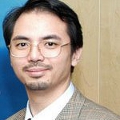Introduction to TCM
What do the basic TCM theories describe?
The basic theories of traditional Chinese medicine describe
the physiology and pathology of the human body,
disease etiology,
diagnosis, and
differentiation of symptom-complexes.
These include, but are not limited to, the theories of
Yin-Yang,
Five Elements,
zang-fu (the organs),
channels-collaterals (the blood vessels),
blood and qi (the concept of qi),
body fluid, and
methods of diagnosis.
Fundamental theories in traditional Chinese medicine possess two outstanding
features, their holistic point of view, and their application of
treatment according to the differentiation of symptom-complexes.
According to these traditional viewpoints, the zang-fu organs are
the core of the human body as an organic entity in which tissues
and sense organs are connected through a network of channels and
collaterals (the blood vessels). This concept is applied extensively
to all aspects of TCM, including physiology, pathology, diagnosis, and treatment.
The functional physiological activities of the zang-fu organs
are dissimilar, but they work in coordination. There exists an
organic connection between the organs and their related tissues.
Pathologically, a dysfunction of the zang-fu organs may be reflected
on the body surface through the channels and their collaterals
(e.g. pimples on skin or canker sores in mouth). At
the same time, diseases of body surface tissues may also affect
their related zang or fu organs. Affected zang or fu organs may
also influence each other through internal connections. Traditional
Chinese medical treatment consists of regulating the functions
of the zang-fu organs in order to correct pathological changes.
With the help of acupuncture, treatment
can also be accomplished by stimulating certain areas of the external body.
Natural Environment and the Body
Not only is the human body an organic whole (or you can also think
of it as a blackbox), but it is also an entity being able to unify with mother nature.
In other words, changes in the natural environment may directly or indirectly affect the body.
For example, changes of the four seasons, and the alternations of day and night
may change the functional condition of the human body, while various geographical
environments can influence differences in body constitution, and
so on so forth. These factors must also be considered when diagnosis and treatment
are given because the body can react differently during different seasons.
The principles of treatment are therefore expected to accord with
the different seasons and environments.
The Concept of Differentiation of Syndromes
Application of treatment according to the differentiation of syndromes is another
characteristic of traditional Chinese medicine. "Differentiation of
syndromes" means to analyze the disease condition in order to know
its essentials, to identify the causative facts, the location and
nature, and to obtain conclusions about the confrontation between
pathogenic and antipathogenic factors. In traditional Chinese medicine,
differentiation must be performed to outline the specific principles and
methods of treatment because similar diseases may have different
clinical manifestations, while different diseases may share the same
syndromes. Treatment in traditional Chinese medicine stresses the
differences of syndromes, but not the differences of diseases.
Therefore different treatments for the same disease exist and different
diseases can be treated by the similar medical analogy.
| 
 This website is published, edited and designed by Raymond Cheng,
and reflects only and only his personal views and opinions in his individual capacity.
The information available at this website is not intended
directly or by implication to either diagnose or treat any
medical, emotional, or psychological condition or disorder.
It is also not intended to create a physician-patient relationship
between you and I or between you and Wyith Institute™ and The Office of Dr Raymond K K Cheng.
The information here is not a substitute for advice and treatment provided
by your physician or by another healthcare professional.
It is always recommended that consultation with local healthcare providers
be obtained for any of your specific health or medical concerns.
Furthermore, any products that can be purchased (yet you can see I don't have much
to sell here) through advertisers' banners or through links to other websites
are not either explicitly or implicitly given any warranty or endorsement
by me, my colleagues, Wyith Institute™ or any of its associated businesses.
This website is published, edited and designed by Raymond Cheng,
and reflects only and only his personal views and opinions in his individual capacity.
The information available at this website is not intended
directly or by implication to either diagnose or treat any
medical, emotional, or psychological condition or disorder.
It is also not intended to create a physician-patient relationship
between you and I or between you and Wyith Institute™ and The Office of Dr Raymond K K Cheng.
The information here is not a substitute for advice and treatment provided
by your physician or by another healthcare professional.
It is always recommended that consultation with local healthcare providers
be obtained for any of your specific health or medical concerns.
Furthermore, any products that can be purchased (yet you can see I don't have much
to sell here) through advertisers' banners or through links to other websites
are not either explicitly or implicitly given any warranty or endorsement
by me, my colleagues, Wyith Institute™ or any of its associated businesses.



 Thank you for visiting this TCM and acupuncture information website.
If you have previously been to this website, you might have
noticed that some of the pages on ancient historical ideas and
holistic thinkings related to Chinese metaphysics are temporarily taken offline.
This is because I will be revamping the whole website and be moving
those information into a new \"Ancient Chinese Culture\" section
so as to reflect a more current perspective on the interpretation
of some of the fundamental concepts as well as to include
some of the latest information in the area.
But if you have just found this website for the very first time, I welcome you again and
wish you could find what you require and, hopefully, you could also be benefitted
from reading the articles I published on this website.
Thank you for visiting this TCM and acupuncture information website.
If you have previously been to this website, you might have
noticed that some of the pages on ancient historical ideas and
holistic thinkings related to Chinese metaphysics are temporarily taken offline.
This is because I will be revamping the whole website and be moving
those information into a new \"Ancient Chinese Culture\" section
so as to reflect a more current perspective on the interpretation
of some of the fundamental concepts as well as to include
some of the latest information in the area.
But if you have just found this website for the very first time, I welcome you again and
wish you could find what you require and, hopefully, you could also be benefitted
from reading the articles I published on this website.